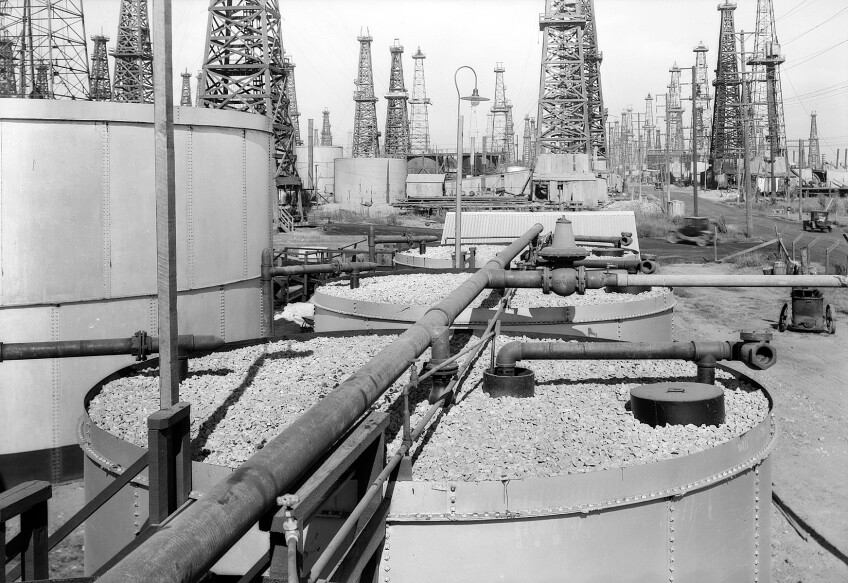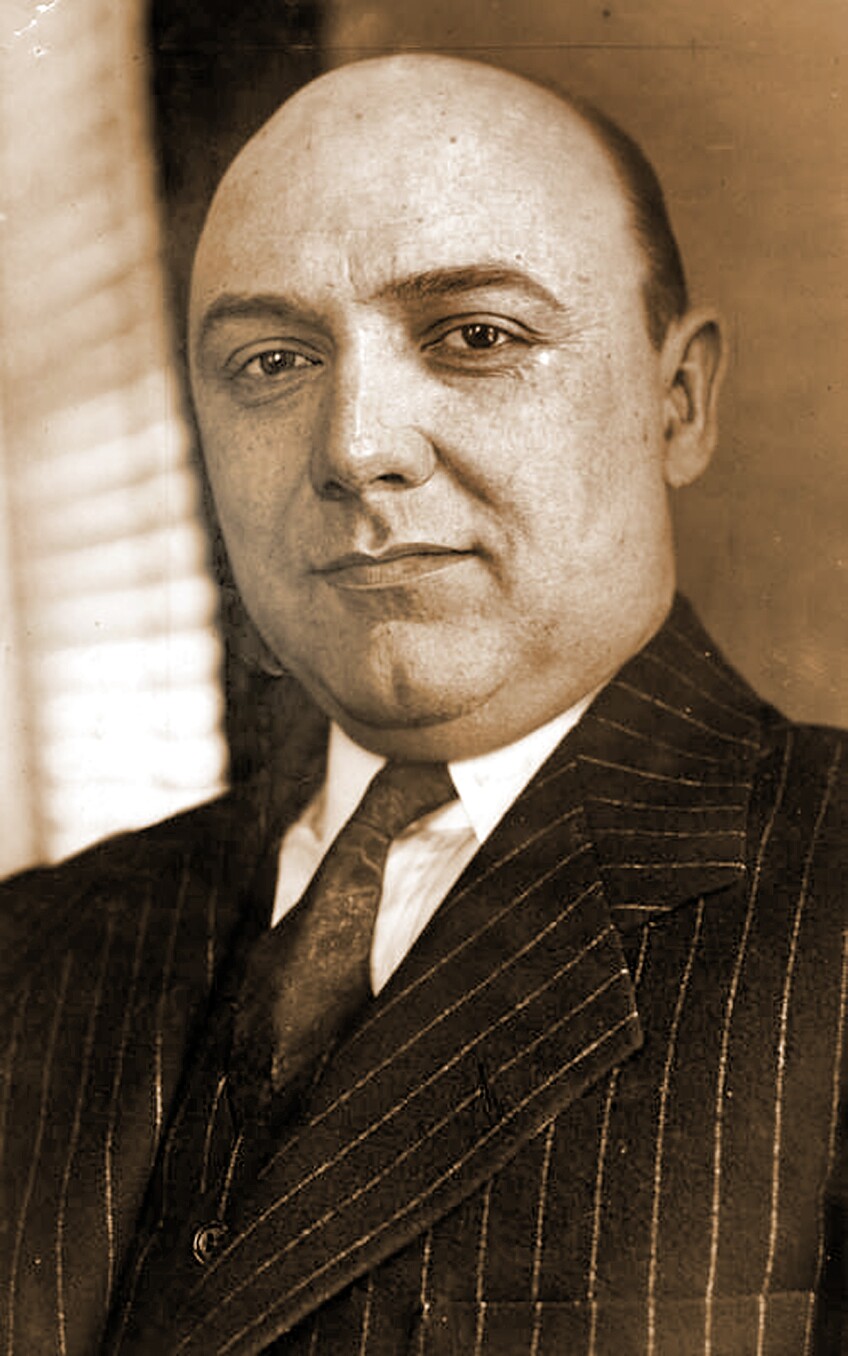The Julian Pete Scandal: The Multi-Million Dollar Oil Swindle that Rocked 1920s Los Angeles

The Jazz Age was an age of exuberance. Of flag pole sitting and six-day bicycle races. Of flappers and the Charleston. It was an age of excess. Of shady business deals and eager suckers. Of bankers tossing money into rigged investment pools.
Los Angeles had a pool — a pool of oil — that anyone lucky enough could tap. It had happened in Long Beach and Torrance and on Signal Hill. It was happening in Santa Fe Springs where a new well in 1921 gushed 2,500 barrels of oil a day. The rush was on to drill for more.
Everybody wanted in the oil pool. C. C. Julian offered to help.
The Getting Is Good
1920s Los Angeles was made for dreamers and schemers, and Courtney Chauncey (C. C.) Julian was both. He'd knocked around the Bakersfield and Oklahoma oil fields and later sold oil company stock in Texas. When he arrived in Los Angeles in 1922 — with oil speculation booming — he borrowed his way into an oil lease in Santa Fe Springs where, if he was lucky, he might find oil.

Julian was now $30,000 in debt. He didn't have an oil well or even a drilling rig. In fact, he had nothing but a quarter-page ad in the Los Angeles Times that promised potential investors "I'm trying to offer you the squarest and surest opportunity for big returns that it is humanly possible to make." Ordinary Angelenos, yearning to be part of something big and profitable, wanted to believe in dreams.
They mailed him checks or went with cash in hand to Julian's lavish office to invest in a fractional "unit" of the wells, refineries and gas stations Julian promised he would build. Within months, he raked in more than a million dollars, mostly from small investors beguiled by ads in the folksy vernacular that transplanted Midwesterners trusted. By then, Julian had brought in two wells that pumped about 3,500 barrels of oil a day.
Even when three more wells came in, it should have been obvious that the dream Julian sold didn't match reality. If investors thought about the gap, they didn't seem to care. Julian had a knack for calming the fears of small investors while urging them to hold on to their "units" and to buy more. "Get in while the getting is good," he told them in another ad in the Times. That might have been Julian's own motto.

"I did not have any swell credentials to lay before you," Julian reminded investors. "I pledged my word of honor, and promised you, each and every one, that my foremost thought, first, last and all the time, would be to play fair and square with you and I want you to know that before I stain that sacred pledge, they will carry me out 'dead.'"
It was a lie. Julian was running an old swindle given a modern gloss with a barrage of newspaper advertising and radio broadcasts. The idea was to sell a get-rich-quick fantasy, make it plausible and pay dividends to early investors to keep the cash coming from new suckers. That's what Bernie Madoff did for decades, taking in almost $19 billion until his pyramid scheme fell apart in 2008.
Watered Stock, Broken Promises

Julian's spectacular con gushed another million dollars in 1923 and attracted the notice of state regulators, who suspected stock manipulation. They found that Julian didn't have authorization to sell stock in the newly formed Julian Petroleum Corporation (which everyone called Julian Pete). When he did get a permit, regulators limited the number of shares he could sell.
Julian responded by fraudulently selling more stock, sending his account books to Delaware where they couldn't be examined, and handing out thousand-dollar bills in corruption-friendly Los Angeles. He invested heavily in the political career of Asa Keyes, the new district attorney, and urged Julian Pete investors to vote for Keyes in the next election. Keyes remembered the favor.
Julian got into a bar fight with movie star Charlie Chaplin. Someone sprayed his Los Feliz mansion with bullets. The Times stopped printing his ads, citing Julian's bad record with the state corporation commission. After less than two years, the swindle was beginning to unravel.
Rumors of watered stock and broken promises threatened the price of Julian Pete stock in 1924. To restore investor confidence, Julian reorganized the company with new directors, including Senator William H. King of Utah and other respectable businessmen who helped themselves to kickbacks and bonuses. Julian was still the company's public face, loudly promoting its Defiance gasoline with super secret properties that, he said, would be worth millions to lucky investors.
The Weight of Worthless Paper

Julian was a good conman, but not good enough. In 1925, Julian transferred control of his company to Sheridan C. Lewis, an oil speculator with wells in Santa Fe Springs, Huntington Beach and Torrance. The deal (worth half a million dollars to Julian) left stock holders vulnerable.
But even as a shell and without Julian, the company had value to an operator like Lewis, with a long history of crooked deals orchestrated with another conman who called himself Jack Bennett (Jacob Berman in reality). Lewis and Berman compounded Julian's pyramid scheme by rigging the Los Angeles stock market.

They merged Julian Petroleum with an established oil producer and issued hundreds of thousands of shares in what now looked like a legitimate business. They bought a Los Angeles brokerage firm whose salesmen sold those watered shares to the brokerage's 7,000 well-to-do customers, including some of Hollywood's biggest names.
They then invited the city's leading banks and businessmen into an investment pool that guaranteed profits by churning the price of Julian Pete stock ever higher. Though aware of the over-issue of stock and the legal risks in rigging the market, pool members couldn't resist the enormous returns that Lewis and Berman promised. Small investors jumped in as share prices rose, only to see prices tumble when favored pool members quietly sold their inflated stock.
Julian Pete's successor companies had been authorized to issue only 600,000 shares of stock. By mid-1927, Lewis and Berman had sold almost four million shares to trusting investors. When state regulators finally banned further stock sales, the company collapsed under the weight of all this worthless paper. 43,000 investors were left with almost nothing.
Lewis resigned from the company's board and declared bankruptcy. Berman fled the country for a time, carrying $630,000 in cash. Former California Senator Frank Flint, the company's chairman, tried vainly to explain what had happened. A blizzard of indictments followed, naming Frank Flint, his brother Motley Flint, other company board members, prominent bankers, movie studio heads and members of the Los Angeles Merchants and Manufacturers Association.
As for C. C. Julian, when state regulators sought the help of District Attorney Asa Keyes to prosecute him for fraud, the DA declined. One of Julian's investments had actually paid off.
Belief in Miracles

The Julian Pete trial was held at the beginning of 1928, although only Lewis and Berman and five other company officials were in court. District Attorney Keyes quietly dropped charges against the other players in the investment pools, the loan kickbacks and the stock watering.
The trial seemed fishy from the start, but it was still a shock when the jury found all seven defendants innocent. The Los Angeles Times blamed "the incompetent and bungling manner" in which the case was presented. Six months after the trial, defrauded investors learned that three jury members had been bribed and that Keyes himself had been paid tens of thousands of dollars to oversee a case designed to lose.
In the end, the Julian Pete swindle sent no one to jail, not even C. C. Julian. Business reputations had been damaged, but in 1920s Los Angeles, new respectability could always be bought. Former DA Asa Keyes spent 18 months in prison following his bribery conviction. Lewis and Berman were sentenced to seven years for crimes not directly connected to Julian Pete. Banker Motley Flint, who had helped to set up the biggest stock pool, was assassinated by an investor who had lost $35,000. C. C. Julian, facing prosecution in Oklahoma, fled to Shanghai, lived high for a time, and committed suicide (or was poisoned by a vengeful investor).

According to Jules Tygiel, author of "The Great Los Angeles Swindle: Oil, Stocks, and Scandal During the Roaring Twenties," Julian Pete and its aftermath "contributed to the collapse of the First National Bank, the election of former Ku Klux Klansman John Porter as mayor, and the defeat of Governor C. C. Young in his bid for re-election." More importantly, Julian Pete blighted the lives of tens of thousands of gullible investors caught up in Jazz Age exuberance. An estimated $150 million had been swept away in the various phases of the scheme.
Journalist Walter V. Woehlke, writing in Sunset Magazine in the fall of 1927, tried to find the reason why so many Angelenos kept on believing even after everyone connected with Julian Pete was suspected of fraud. "Los Angeles believes in miracles," he thought.
It has seen the transformation of a drowsy, dusty … cow town on the edge of nowhere into the largest city west of Chicago; it has seen the marvelous growth of the real estate and movie industries; it has seen land values skyrocket to the ceiling and stay there; it has seen hundreds of fortunes spout out of the earth in black, smelly streams. That's why Los Angeles still believes fervently in Santa Claus. It's this powerful faith, this naïve credulity of Los Angeles that made possible the remarkable Julian Petroleum stock swindle with its aftermath of singed and tarnished reputation.Walter V. Woehlke, Sunset Magazine (1927)
Booster optimism, unregulated stock speculation, a culture of civic corruption, the power of new advertising media and the cunning of stock promoters fed the Julian Pete swindle. In 1929, those same currents brought down the New York Stock Exchange and began the Great Depression.
Sources
"The Great Los Angeles Swindle: Oil, Stocks, and Scandal During the Roaring Twenties" by Jules Tygiel (Oxford University Press, 1994) is the definitive account of the swindle in all its versions. Paul R. Spitzzeri, writing in the Homestead Blog of the Homestead Museum in 2019, has many additional details, particularly about the bankers and businessmen who helped rig the Los Angeles stock market. Walter V. Woehlke's three-part exposé of the swindle in Sunset magazine (September through November 1927) appeared shortly before the trial.




